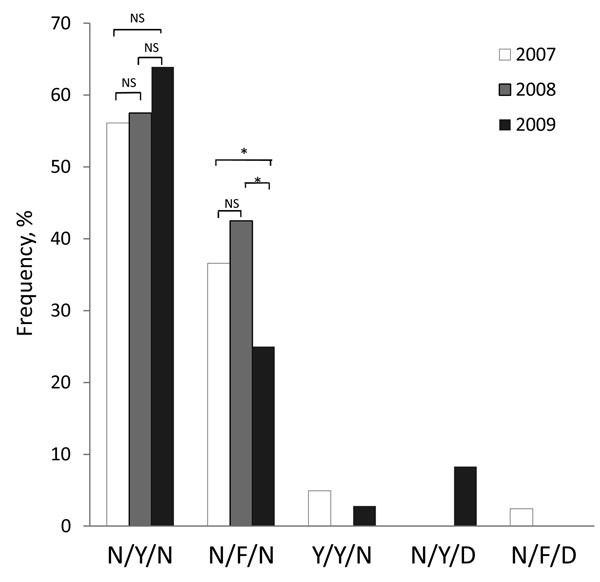Volume 17, Number 3—March 2011
Dispatch
Multidrug-Resistant Genotypes of Plasmodium falciparum, Myanmar
Figure 2

Figure 2. Annual prevalence of Plasmodium falciparum dihydrofolate reductase haplotypes among clinical samples collected from Kachin State, northeast Myanmar, 2007–2009. The x-axis shows the 5 haplotypes (the amino acids at positions 86, 184, and 1042 with mutated amino acids in boldface). The χ2 test was performed to compare prevalence of 2 major haplotypes between years. For each haplotype, NS denotes no significant difference (p>0.05) between years; asterisk (*) denotes significant difference (p<0.05) between years.
1These authors contributed equally to this article.
Page created: July 25, 2011
Page updated: July 25, 2011
Page reviewed: July 25, 2011
The conclusions, findings, and opinions expressed by authors contributing to this journal do not necessarily reflect the official position of the U.S. Department of Health and Human Services, the Public Health Service, the Centers for Disease Control and Prevention, or the authors' affiliated institutions. Use of trade names is for identification only and does not imply endorsement by any of the groups named above.